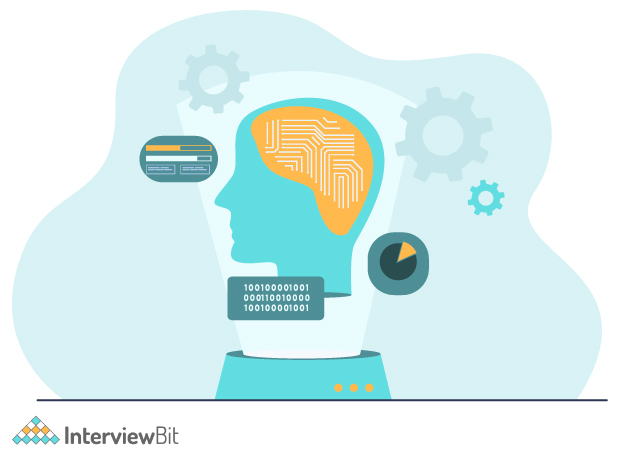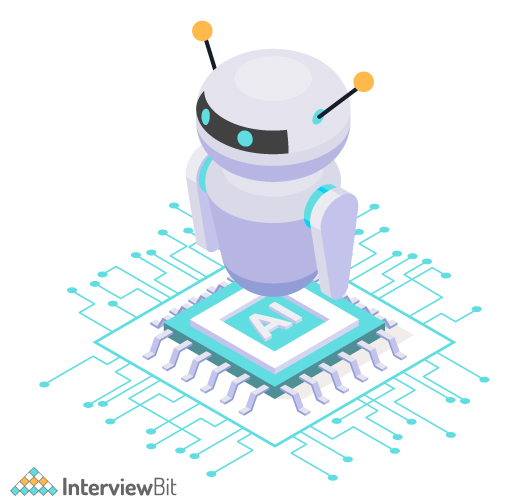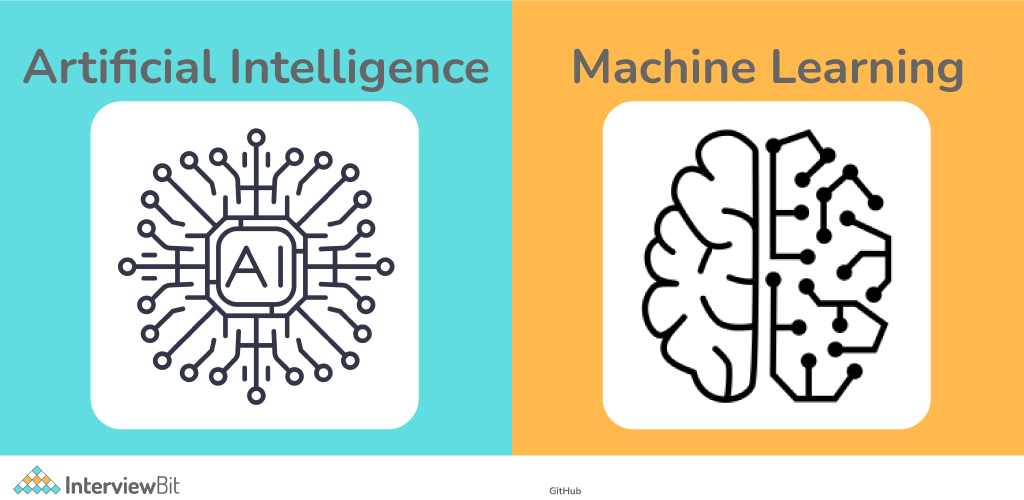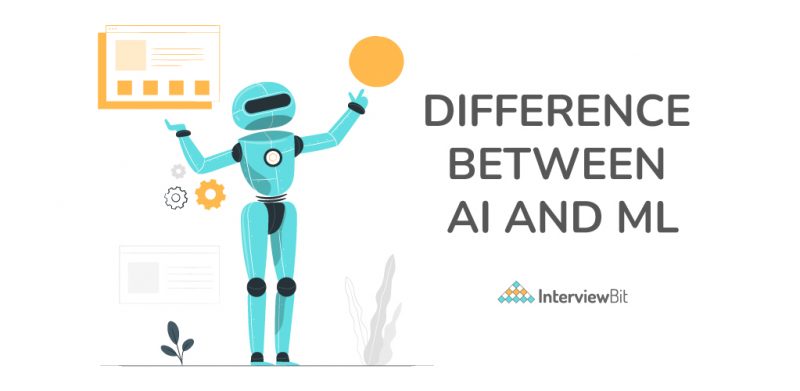People usually get confused with the two terms “Artificial Intelligence” and “Machine Learning.” Both the terminologies get used interchangeably, but they are not precisely identical. Machine learning is a subset of artificial intelligence that helps in taking AI to the next level.
This blog will see how these two terms are different and get rid of the confusion with some practical examples.
What is Artificial intelligence?

The term talks about the intelligence that is made artificially. So, Artificial Intelligence is a branch of computer science that allows machines or computer programs to learn and perform tasks that require intelligence that is usually performed by humans.
Confused about your next job?
In layman language, people think of AI as robots doing our jobs, but they didn’t realize that AI is part of our day-to-day lives; e.g., AI has made travel more accessible. In the early days, people used to refer to printed maps, but with the help of maps and navigation, you can get an idea of the optimal routes, alternative routes, traffic congestion, roadblocks, etc.
Artificial Intelligence is not limited to machine learning or deep learning. It also consists of other domains like Object detection, robotics, natural language processing, etc.
Types of AI
Artificial Narrow Intelligence: It is also known as weak AI, which involves applying AI to specific tasks. The best example of ANI is Alexa. It operates on a particular range of functions. These systems pull information from a specific dataset and are trained to perform a single task. Most of the AI systems that surround us today are based on Narrow AI. Some other applications that use this AI are Google Assistant, Siri, Google Translate, recommendation systems, etc. We call ANI Weak AI because the applications are not close to human intelligence. They lack consciousness and awareness since they cannot think by themselves.
Artificial General Intelligence: It is also known as strong AI or deep AI. It includes machines with the ability to perform intellectual tasks that mimic human intelligence. They can think, learn and apply their intelligence to solve problems. But some experts doubt that AGI will ever be possible, and some consider that it’s not desirable. There are several characteristics that AGI systems should possess; these include common sense, background knowledge, and transfer learning. Currently, the possibility of achieving AGI systems is very low because we still don’t have complete knowledge of our brains.
Artificial Super Intelligence: It refers to the time when machine capabilities will surpass human beings. ASI is currently imagined as a hypothetical situation depicted in science-fiction books and movies when machines take over the world. Machines will become self-aware and start evoking emotions, beliefs, and desires on their own. The ASI systems would have a more extraordinary memory, decision-making power, and problem-solving skills will become much superior to human beings.
Features of Artificial intelligence
Several features of artificial intelligence make it unique. Some of them are as follows:
Emulate human intelligence: AI systems are impersonating human minds and solving different kinds of problems. As humans analyze, draw inferences, and act accordingly, artificial intelligence machines also attempt to behave like humans and act. Researchers and developers are working hard on the systems to become self-aware and gain the level of intelligence humans have by creating theoretical models of the human brain for interdisciplinary studies on its functions, including vision, motion, sensory control, and learning.
Elimination of tedious tasks: We humans sometimes get bored with repetitive tasks, but you will never experience dullness with AI machines. The machine will continue to perform the job as per your commands irrespective of the number of times you ask them to do it.
Data Ingestion: The data we are all producing is growing exponentially. Such information is dynamically updated, and it becomes difficult for regular database systems to store all of it. So, here AI-enabled machines come in. They gather and analyze data that was previously difficult to handle but now prove helpful for all. All thanks to AI. One such example of artificial intelligence would be Elucify, which is a database for multiple business contacts.
Cloud computing: AI requires a massive amount of data for computers to learn, and physical data storage can be a big issue. AI capabilities are collaborating with the cloud computing environment so that organizations can work strateh=gically and efficiently. Microsoft Azure is a popular platform for cloud computing, and it allows the deployment of ML models to the data stored on servers.
What is Machine learning?

Machine Learning is basically a study of algorithms and statistical models that machines use to perform a specific task without any explicit instructions. These machines rely on pattern analysis and predict the results. Machine learning is a subset of Artificial Intelligence that involves the following steps:
- Data collection
- Data preparation
- Model Selection
- Model Training
- Model evaluation
- Parameter tuning
- Making predictions
Most industries have recognized the importance of machine learning by observing great results in their products. These industries include financial services, transportation services, government, healthcare services, etc.
Types of Machine Learning
Supervised learning: In this type of learning, the machine learns under supervision. They learn by feeding labeled data (data that has been tagged with one or more labels, for example, an image is labeled as a flower) and explicitly telling that this is the input (flower) and the predicted output should be flower too, this kind of data is called trained data which is fed as input to the machine. The inputs are mapped to the output in supervised learning.
Unsupervised learning: In this type of learning, the machine has no supervision while learning. An algorithm determines the data pattern on its own. They are fed unlabeled data (data that has not been tagged with labels, for example, news articles and tweets). Various recommendation systems are seen on the web using this learning. They learn from the user’s activities and predict the output.
Reinforcement learning: In this type of learning, machines are trained to make decisions to achieve their goal in complex environments. It is similar to learning with trial and error. Just like human beings learning from their mistakes, machines learn by making errors; it assists you to know because it has some penalties added in the form of time, cost, etc. For example, when an algorithm learns to play a video game that has several kinds of obstacles.
Features of Machine learning
Several features of machine learning make it unique. Some of them are as follows:
Automating repetitive tasks: It has become easy to perform repetitive tasks using machine learning, thus increasing productivity. An excellent example of this situation is email automation.
Compatibility with IoT: Several companies actively use IoT, and machine learning is the best option to attain efficiency in IoT-based products. Businesses can boost their production products with the combo pack of these two technologies.
Accuracy in data analysis: Traditional way of analyzing data with trial and error methods was very hectic for larger datasets, but ML has made it easy to explore a massive volume of data in a few steps. It can generate accurate results with fast and efficient algorithms that can process real-time data.
Boosting business intelligence: Machine learning combined with big data can generate an outstanding level of business intelligence, which helps companies take strategic initiatives.
AI Vs ML: Full Comparison

| Artificial Intelligence | Machine Learning |
| As the name says, artificial intelligence is incorporating human intelligence into machines. So, AI is a technique that enables machines to mimic human behavior. | Machine learning is the subset of AI that uses statistical methods to allow machines to improve their results with the amount of training data fed to it. |
| The focus is on improving learning capabilities along with thinking capabilities. | The focus is on improving learning capabilities. |
| AI consists of devices that can handle all sorts of tasks on their own. | ML as an extension to AI, analyses a series of algorithms to create a program that helps to automates actions. |
| The ultimate goal of AI is to embed intelligence in machines so that they can learn and think like humans to solve complex problems. | The ultimate goal of ML is to train machines with data so that they can learn, improve and give accurate results. |
| The scope of artificial intelligence is large, it contains fields like robotics, natural language processing, and expert systems | The scope of machine learning is limited, it consists of ML algorithms like the random forest, k-means, decision trees, support vector machines, etc. |
| The main objective of artificial intelligence is to maximize the chances of success and not accuracy. | The main objective of machine learning is to maximize the accuracy of predicted output and not the success ratio. |
| The basic skills required for AI are programming design, problem-solving, data science, machine learning, algorithms, data mining, and robotics, etc. | The basic skills required for Ml have applied mathematics, data modeling, algorithms, probability, statistics and programming languages, etc. |
| Artificial Intelligence is decision-making. | Machine learning allows computers to learn from the data provided. |
| AI can completely deal with structured, semi-structured, and unstructured data. | ML can deal with structured and semi-structured data. |
| AI systems are proficient in learning, reasoning, and self-correction | ML systems are proficient in learning and self-correction when provided with new data. |
| It uses logic and decision trees. | It used statistical models. |
| AI is a subset of Data Science. | ML is a subset of AI and Data Science. |
| Good examples of AI are Apple Siri, Google Assistant, Tesla self-driving cars, Amazon Alexa, etc. | Good examples of machine learning are Google search engines, Twitter sentiment analysis, stock prediction, news classification, etc. |
Conclusion
Artificial Intelligence and Machine Learning, both are being broadly used in several ways. There are lots of real-world examples for both technologies. We don’t even realize and our work is done, thanks to AI and ML. So to sum it up, AI is responsible for solving tasks that require human intelligence and ML is responsible for solving tasks after learning from data and providing predictions.
All the ML we do is a part of AI but not all AI is ML.
Frequently Asked Questions
What are AI and ML examples?
Below are few examples of AI:
- Chatbots
- Digital assistants
- maps and navigations
- disease mapping
- NLP tools
- self-driving cars
Below are few examples of ML:
- Traffic alerts
- Video Surveillance
- Sentiment analysis
- Recommendation systems
- Online video streaming applications
What is the purpose of AI and ML?
Artificial Intelligence and Machine Learning have made their space in lots of applications. Humans are relying on AI/ML-based products for doing their tasks. Even businesses are able to achieve their goal efficiently using them. And the most important point is that the amount of data generated today is very difficult to be handled using traditional ways, but they can be easily handled and explored using AI and ML.
Why is AI the future?
Artificial Intelligence has already occupied several industries, it has spread its wings from medical breakthroughs in cancer and other diseases to climate change research. Humans are able to get efficient solutions to their problems with the help of computers that are inheriting human intelligence. So the future is bright with AI, but it is good to the extent when only humans command machines and not machines start to command humans.
What is the best programming language for machine learning?
The two popular languages for machine learning are Python and R. They provide lots of libraries that act as a helping hand for any machine learning engineer, additionally they are easy to learn. Other languages are Java, Julia, Scala, and C++.
Is Python the future?
Due to its easy code readability and user-friendly syntax, Python has become very popular in various fields like ML, web development, research, and development, etc. Other features include the availability of free python tools, no support issues, fewer codes, and powerful libraries. So, python is going nowhere and will be on the next level because of its involvement in Artificial Intelligence.
Additional Resources
- Artificial Intelligence MCQ
- Applications of Artificial Intelligence
- Artificial Intelligence Books
- Characteristics of Artificial Intelligence
- Artificial Intelligence Salary
- Machine Learning MCQ
- Machine Learning Courses
- Machine Learning Engineer
- Machine Learning Projects
- Machine Learning Books
- Machine Learning Applications
- Machine Learning Engineer Salary




